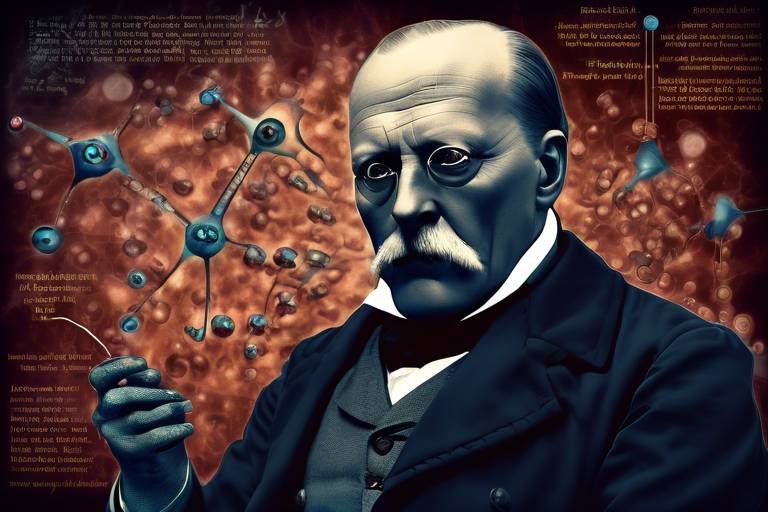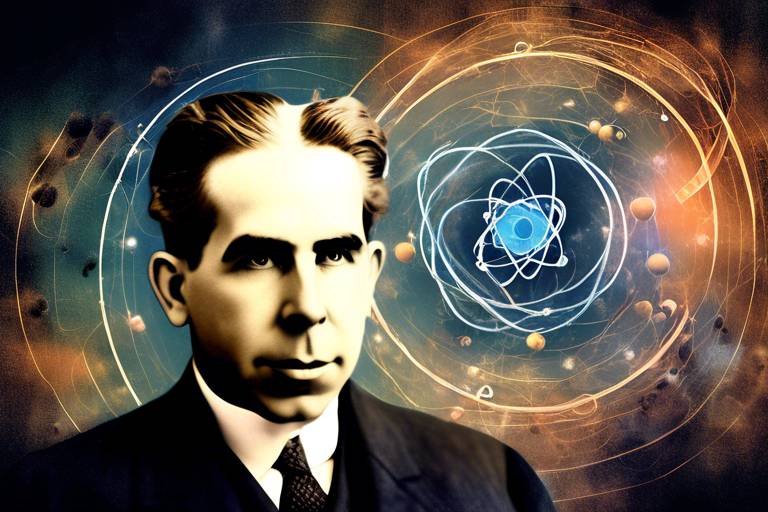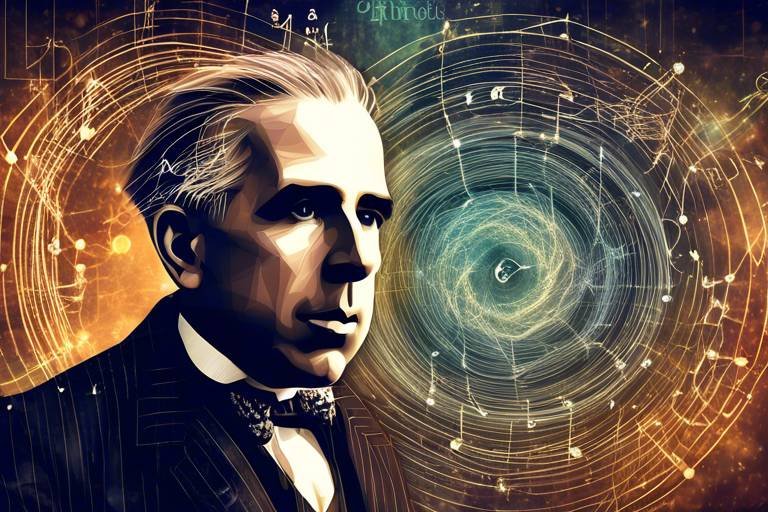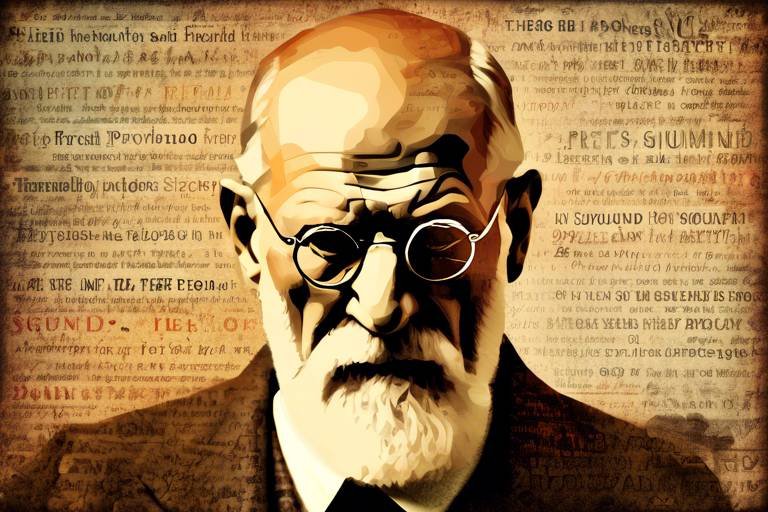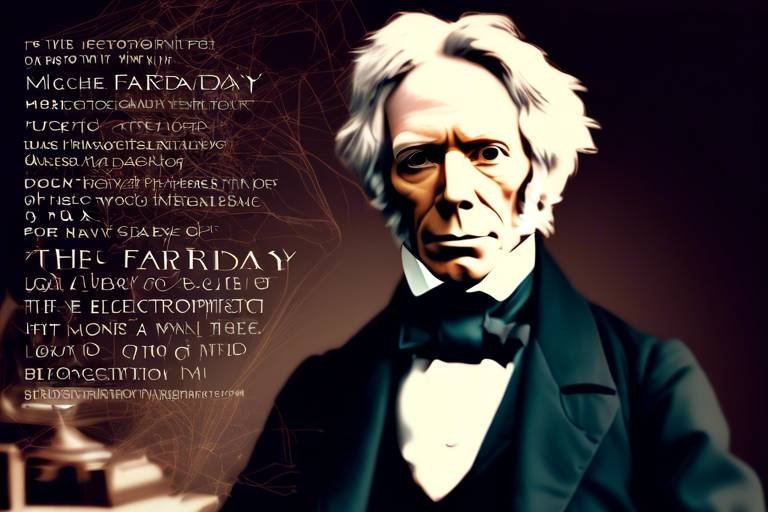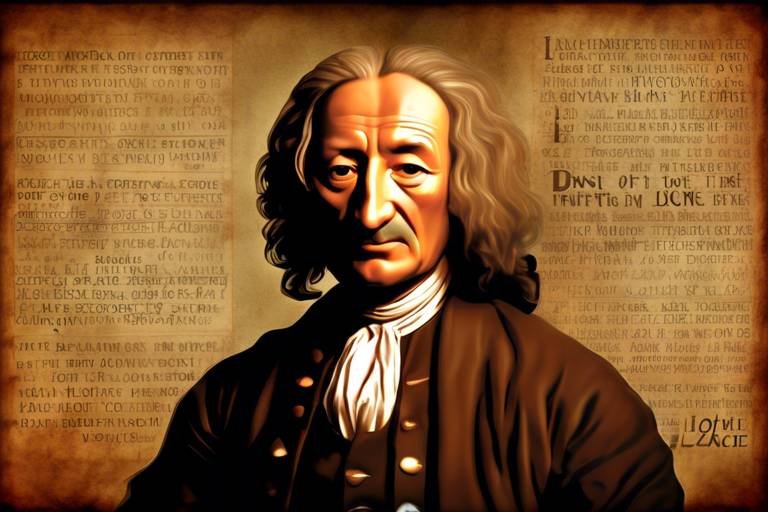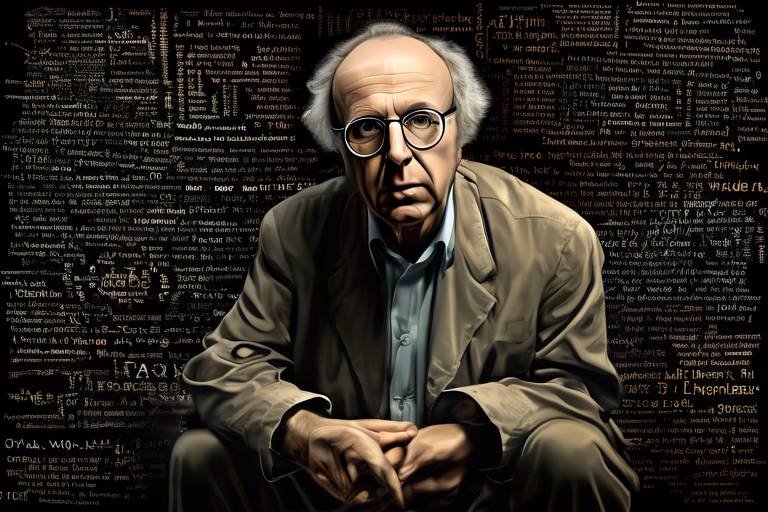The Life of Emil von Behring and Immunology
Emil von Behring was not just a name in the annals of medical history; he was a trailblazer whose contributions to immunology have saved countless lives. Born in 1854 in Germany, von Behring's journey into the world of medicine was marked by a relentless pursuit of knowledge and an unwavering commitment to combatting infectious diseases. His groundbreaking work in serum therapy and the development of antitoxins laid the foundation for modern immunology, changing the landscape of medical treatment forever. But what drove this man to become a pioneer in his field? What were the key moments that shaped his career and led to his monumental discoveries? Let’s dive into the life of this remarkable individual and explore how his work continues to resonate in today's medical practices.
Emil von Behring's formative years were instrumental in shaping his future in medicine. Growing up in a modest family, he was instilled with a sense of curiosity and a desire to learn. His early education was characterized by a deep interest in the natural sciences, which was further fueled by the influence of his teachers and mentors. After completing his schooling, he enrolled at the University of Marburg, where he studied medicine and immersed himself in the study of microbiology. It was during this time that he developed a fascination with the mechanisms of disease and the body's immune response. This passion for science would ultimately lead him down the path of groundbreaking research in immunology.
Von Behring's initial forays into the medical field were marked by a series of significant experiences that would shape his future endeavors. After graduating, he took on various roles in hospitals and laboratories, where he honed his skills and gained invaluable practical knowledge. It was during this period that he encountered influential figures who would guide him toward his groundbreaking research. Among these was the renowned bacteriologist Robert Koch, whose work on infectious diseases would profoundly impact von Behring's career.
Robert Koch's mentorship played a crucial role in von Behring's development as a scientist. Their relationship was not just that of a mentor and mentee; it was a collaboration that sparked innovative ideas and research. Koch's meticulous approach to studying pathogens and his groundbreaking discoveries in bacteriology inspired von Behring to delve deeper into the world of infectious diseases. Under Koch's guidance, von Behring learned the importance of rigorous experimentation and the need for a systematic approach to understanding how diseases spread and affect the human body.
The collaboration between Koch and von Behring was a pivotal moment in the field of bacteriology. Together, they conducted groundbreaking research that led to significant advancements in understanding infectious agents. Their joint efforts resulted in the identification of various pathogens and the development of methods to isolate and study them. This collaboration not only enhanced von Behring's research skills but also solidified his reputation as a leading figure in the medical community.
One of von Behring's most remarkable contributions was his work on serum therapy, which revolutionized the treatment of infectious diseases. He discovered that the blood serum of animals that had recovered from certain infections contained antibodies that could neutralize toxins produced by pathogens. This led to the development of antitoxins, which were used to treat diseases like diphtheria and tetanus. The application of serum therapy in clinical settings marked a significant turning point in medicine, providing a new way to combat deadly infections and save lives.
Von Behring's major discoveries laid the foundation for modern immunology. His most notable achievement was the development of the diphtheria antitoxin, which became a crucial tool in public health. This antitoxin not only reduced mortality rates associated with diphtheria but also paved the way for the creation of vaccines that would protect future generations. Von Behring's work demonstrated the potential of harnessing the body's immune response to fight diseases, a principle that remains at the core of immunology today.
In 1901, Emil von Behring became the first recipient of the Nobel Prize in Physiology or Medicine, a recognition that underscored the significance of his contributions to the field. This prestigious award not only highlighted his groundbreaking work but also elevated the importance of immunology as a discipline. The Nobel Prize brought von Behring international acclaim and further motivated him to continue his research, inspiring future generations of scientists to explore the mysteries of the immune system.
Von Behring's contributions to immunology continue to influence contemporary research. His pioneering work laid the groundwork for the development of vaccines and advanced treatments for various diseases. Researchers today build upon his findings, exploring new ways to enhance the immune response and combat emerging infectious diseases. Von Behring's legacy is a testament to the power of scientific inquiry and the impact one individual can have on the health of humanity.
The advancements in immunology stemming from von Behring's research have shaped modern medicine in profound ways. His discoveries paved the way for the development of vaccines that have eradicated or controlled many infectious diseases. Today, we owe much of our understanding of the immune system to the foundational work of Emil von Behring, whose legacy lives on in the ongoing fight against infectious diseases.
- What is Emil von Behring known for?
Emil von Behring is known for his pioneering work in immunology, particularly the development of serum therapy and the diphtheria antitoxin. - What impact did von Behring have on modern medicine?
His discoveries laid the groundwork for vaccines and treatments that have saved millions of lives worldwide. - Why did von Behring win the Nobel Prize?
He was awarded the Nobel Prize in 1901 for his contributions to the field of immunology, particularly for his work on serum therapy.

Early Life and Education
Emil von Behring was born on March 15, 1854, in the quaint town of Hansdorf, Prussia, which is now known as Poland. Growing up in a modest family, his father was a farmer, and his mother was a homemaker. From a young age, Emil was captivated by the mysteries of the natural world, a curiosity that would eventually lead him down the path of medicine and science. His early life was marked by a strong sense of duty and a desire to improve the lives of others, qualities that would define his illustrious career.
As a child, Emil was not particularly studious, but he had a knack for understanding complex ideas. His education began in the local school, where he often excelled in subjects related to biology and chemistry. After completing his primary education, he pursued further studies at the Gymnasium in nearby Allenstein. It was here that he encountered influential teachers who recognized his potential and encouraged him to pursue a career in medicine.
In 1872, von Behring enrolled at the University of Marburg, where he initially studied under the guidance of renowned professors. His time at the university was transformative, as he was exposed to groundbreaking ideas in the fields of microbiology and pathology. During his studies, he developed a particular interest in the work of Louis Pasteur and Robert Koch, who were making significant strides in understanding infectious diseases.
After earning his medical degree in 1880, von Behring began his career as an assistant to Robert Koch in Berlin. This experience proved invaluable, as it not only honed his research skills but also ignited his passion for immunology. Under Koch's mentorship, he learned the importance of rigorous scientific methodology and the potential for medical research to save lives. It was during this time that von Behring began to formulate his ideas about serum therapy, which would later revolutionize the treatment of infectious diseases.
Emil von Behring's early life and education were marked by a blend of curiosity, mentorship, and a drive to make a difference in the world. These formative years laid the groundwork for his groundbreaking contributions to immunology and modern medicine. His journey from a small-town boy to a celebrated scientist serves as a testament to the power of education and the impact of great mentors in shaping one's destiny.

Career Beginnings
Emil von Behring's journey into the medical field was nothing short of fascinating. After completing his education in medicine, he was eager to apply his knowledge and make a difference in the world. His early career was marked by a series of pivotal experiences that not only honed his skills but also ignited his passion for research in immunology. It's almost like he was a painter, standing before a blank canvas, ready to create a masterpiece that would change the landscape of medicine forever.
In the late 19th century, von Behring began his career at the University of Berlin, where he was exposed to a vibrant community of scientists and researchers. His time there was instrumental in shaping his future. Under the guidance of esteemed professors, he developed a keen interest in bacteriology and the study of infectious diseases. It was during this time that he encountered the works of prominent figures in the field, which would later influence his groundbreaking research.
One of the most significant turning points in von Behring's early career was his association with the renowned bacteriologist Robert Koch. This relationship was akin to a mentor-student dynamic, where Koch's innovative ideas and relentless pursuit of knowledge inspired von Behring to delve deeper into the mysteries of the human immune system. Their collaboration was not just a professional alliance; it was a synergy of minds that would lead to transformative discoveries in the understanding of infectious agents.
As von Behring navigated his early career, he also gained practical experience through various clinical roles. He worked in hospitals and clinics, where he witnessed firsthand the devastating effects of infectious diseases on patients. These experiences served as a catalyst for his research ambitions, pushing him to seek solutions that could alleviate suffering. His early work laid the foundation for what would become a lifelong commitment to advancing medical science.
In summary, von Behring's career beginnings were characterized by a blend of rigorous education, influential mentorship, and practical experience. Each of these elements played a crucial role in shaping his future contributions to the field of immunology. As he moved forward, he was not just another name in the medical community; he was on the brink of a revolution that would change the course of medicine forever.
- What inspired Emil von Behring to pursue a career in medicine?
His early education and exposure to infectious diseases fueled his passion for research and patient care. - How did Robert Koch influence von Behring's work?
Koch's mentorship provided von Behring with the knowledge and inspiration to explore bacteriology and immunology. - What were some of von Behring's early contributions to medicine?
His early work focused on understanding infectious diseases, which laid the groundwork for his later discoveries in serum therapy.

Influence of Robert Koch
Robert Koch, often hailed as the father of bacteriology, was more than just a mentor to Emil von Behring; he was a guiding star in the tumultuous sea of medical research during the late 19th century. Their relationship was not merely one of teacher and student; it was a profound partnership that shaped the very foundations of modern immunology. Imagine a young von Behring, filled with curiosity and ambition, stepping into Koch's laboratory. It was a world buzzing with the excitement of discovery, where every petri dish held the potential for groundbreaking revelations.
Koch's meticulous approach to research and his dedication to understanding infectious diseases left an indelible mark on von Behring. Under Koch's influence, von Behring learned the importance of rigorous scientific methodology. He observed how Koch isolated the pathogens responsible for diseases like tuberculosis and anthrax, and it ignited a spark within him. This mentorship was pivotal; it instilled in von Behring the belief that the key to combating infectious diseases lay in understanding their biological mechanisms.
Moreover, Koch's emphasis on the germ theory of disease resonated deeply with von Behring. He began to see the potential of using the body's immune responses to fight infections, a concept that would later evolve into his groundbreaking work on serum therapy. The lessons von Behring learned from Koch were not just academic; they were transformative, shaping his vision of how science could be harnessed to save lives.
As their collaboration progressed, von Behring became increasingly involved in Koch's research projects. Together, they conducted experiments that would lead to significant advancements in bacteriology. One notable collaboration was their work on anthrax bacilli, which provided insights into the nature of bacterial infections. This partnership was characterized by a shared passion for discovery and a relentless pursuit of knowledge, which ultimately laid the groundwork for von Behring's future innovations.
In summary, Robert Koch's influence on Emil von Behring was profound and far-reaching. It was through Koch's mentorship that von Behring not only honed his scientific skills but also developed a vision for how immunology could revolutionize medicine. Their collaborative spirit and shared dedication to understanding infectious diseases propelled both men into the annals of medical history, with Koch lighting the path that von Behring would later follow, leading to remarkable breakthroughs in serum therapy and immunology.
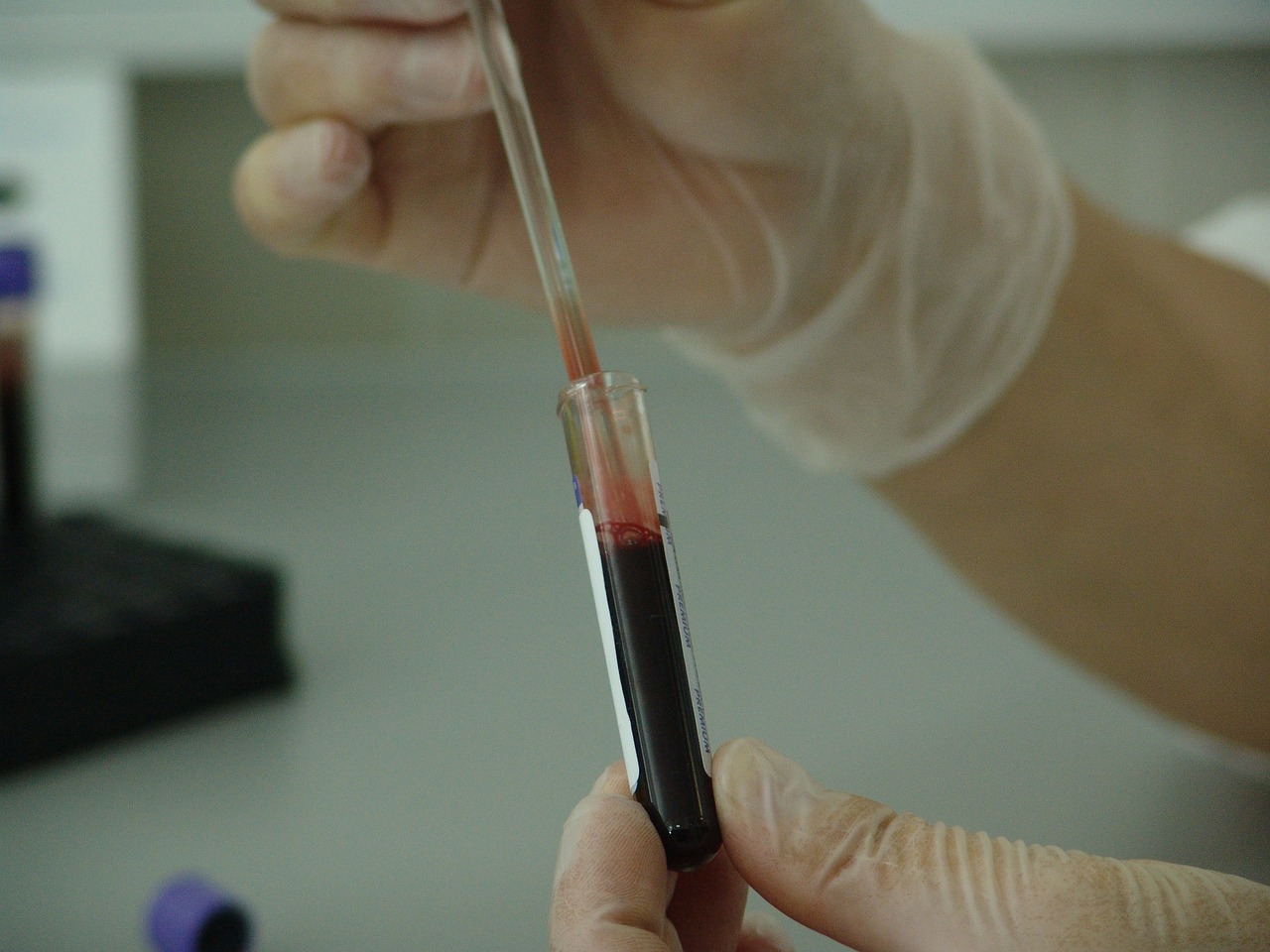
Collaboration and Research
Emil von Behring's collaboration with Robert Koch marked a pivotal moment in the field of bacteriology and immunology. Their partnership was not just a meeting of minds; it was a fusion of innovative ideas and relentless dedication to understanding infectious diseases. Imagine two brilliant scientists, each with their own unique perspectives, coming together like pieces of a puzzle to unlock the mysteries of pathogens. This collaboration was instrumental in laying the groundwork for modern immunological practices.
During their time working together, von Behring and Koch engaged in extensive research that led to groundbreaking discoveries. They focused on various infectious diseases, particularly anthrax and tuberculosis, which were rampant during their era. Their combined efforts resulted in the identification of the causative agents of these diseases, providing crucial insights into how they spread and how they could be treated. This partnership was characterized by rigorous experimentation and a shared goal of improving public health through scientific advancement.
One of the most notable outcomes of their collaboration was the development of techniques for isolating and identifying bacteria. This was a game-changer in the medical field, as it allowed for more accurate diagnoses and targeted treatments. Their research was published in prestigious journals, which not only validated their findings but also inspired a new generation of scientists to pursue bacteriology and immunology.
Furthermore, their collaboration paved the way for the concept of serum therapy, which would later become von Behring's hallmark contribution to medicine. By studying the immune responses in animals infected with pathogens, they were able to isolate antitoxins that could neutralize the effects of toxins produced by bacteria. This was revolutionary at the time, as it opened up new avenues for treating diseases that had previously been deemed untreatable.
In summary, the collaboration between Emil von Behring and Robert Koch was not just a professional relationship; it was a powerful alliance that transformed the landscape of medical science. Their joint efforts in research and discovery not only advanced the understanding of infectious diseases but also laid the foundation for future innovations in immunology. The legacy of their collaboration continues to resonate in the field of medicine today, reminding us of the incredible potential that arises when great minds work together.
- What was Emil von Behring's most significant contribution to medicine?
His most significant contribution was the development of serum therapy, particularly the diphtheria antitoxin, which saved countless lives.
- How did Robert Koch influence von Behring's work?
Koch's mentorship provided von Behring with crucial insights into bacteriology, inspiring him to pursue groundbreaking research in infectious diseases.
- What impact did their collaboration have on public health?
Their collaboration led to significant advancements in understanding infectious diseases, which improved diagnostic methods and treatment options, ultimately enhancing public health outcomes.
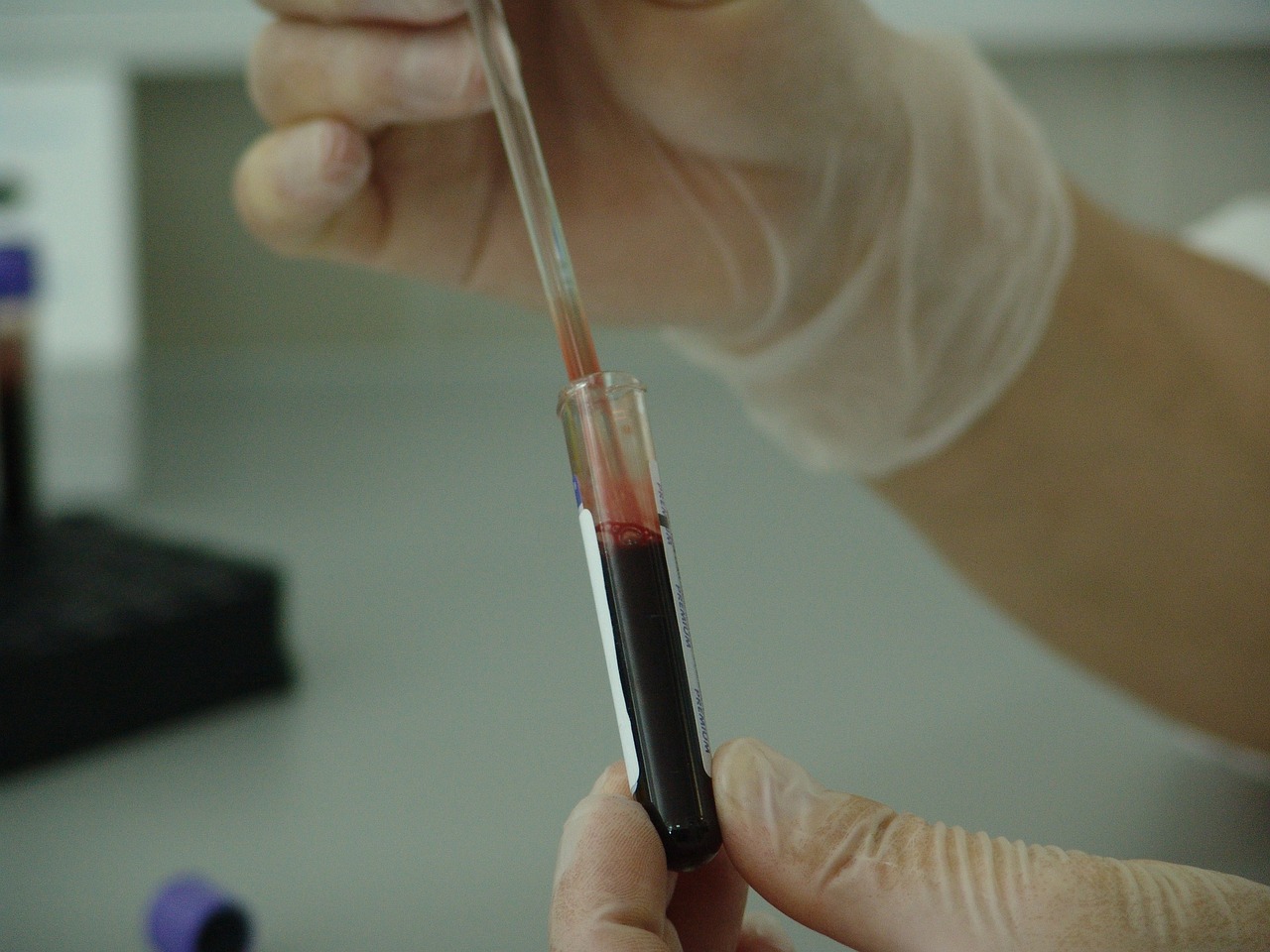
Impact on Serum Therapy
Emil von Behring's pioneering work in serum therapy marked a monumental shift in the treatment of infectious diseases. By harnessing the body's immune response, he developed a method that not only saved countless lives but also laid the groundwork for modern immunology. His innovative approach involved extracting serum from immunized animals, which contained antibodies capable of neutralizing toxins produced by pathogens. This was revolutionary at a time when infectious diseases like diphtheria and tetanus were rampant and often fatal.
One of the most significant breakthroughs von Behring achieved was the development of the diphtheria antitoxin. This was not merely a scientific triumph; it was a beacon of hope for families devastated by the disease. Before the advent of serum therapy, diphtheria was a leading cause of death among children. With the introduction of the antitoxin, mortality rates plummeted. In fact, it is estimated that von Behring's serum therapy reduced diphtheria mortality by over 90% in some regions.
What made von Behring's serum therapy so impactful was its ability to provide immediate relief to patients suffering from acute infections. Unlike vaccines, which stimulate the immune system to prepare for future encounters with pathogens, serum therapy offered a direct and rapid response to existing infections. This difference is crucial; while vaccines are essential for prevention, serum therapy became a lifesaver during outbreaks. For instance, during a diphtheria epidemic, the timely administration of antitoxin could mean the difference between life and death for many children.
The implications of von Behring's work extended beyond diphtheria. His techniques and findings opened the door for further research into serum therapy for various other infectious diseases. For example, the principles he established were later applied to the development of treatments for tetanus, anthrax, and even rabies. As a result, serum therapy not only revolutionized the treatment of individual diseases but also contributed to a broader understanding of the immune system's role in combating infections.
Today, we can draw a direct line from von Behring's pioneering work to the sophisticated immunotherapies used in modern medicine. The concept of using antibodies to treat diseases has evolved, leading to the development of monoclonal antibodies and other targeted therapies that are now used to treat conditions ranging from cancer to autoimmune diseases. This evolution underscores the lasting impact of von Behring’s contributions, as they laid the foundation for ongoing advancements in medical science.
In summary, Emil von Behring's impact on serum therapy cannot be overstated. His innovative methods not only transformed the landscape of infectious disease treatment in his time but also paved the way for future advancements in immunology and therapeutic interventions. The legacy of his work continues to resonate in the medical community, reminding us of the power of scientific inquiry and the potential of the human immune system.
- What is serum therapy? Serum therapy involves the use of serum containing antibodies to treat infectious diseases, providing immediate immunity to patients.
- How did Emil von Behring contribute to serum therapy? He developed the diphtheria antitoxin, which significantly reduced mortality rates from the disease and laid the groundwork for future immunological treatments.
- Are there modern applications of serum therapy? Yes, the principles of serum therapy have evolved into advanced treatments such as monoclonal antibodies used in various medical conditions today.
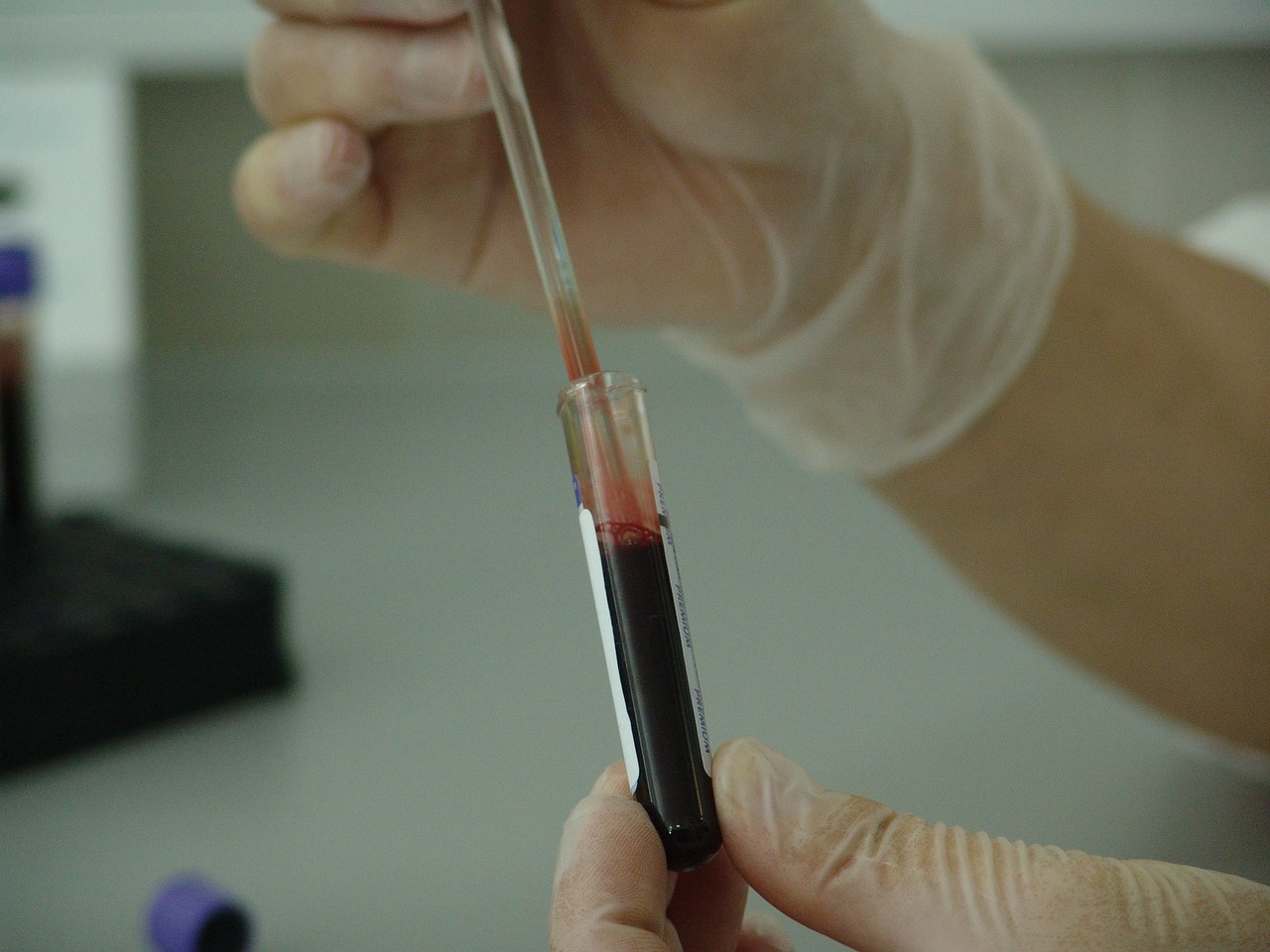
Major Discoveries
Emil von Behring's journey in the realm of immunology was nothing short of revolutionary. His major discoveries not only transformed the scientific landscape but also laid the groundwork for modern medicine as we know it today. One of his most significant achievements was the development of the diphtheria antitoxin, which emerged as a beacon of hope during a time when diphtheria was a leading cause of mortality among children. By isolating the toxin produced by the diphtheria bacteria and creating an antitoxin from the blood serum of immunized animals, von Behring opened the door to a new era of treatment for infectious diseases.
This groundbreaking work was a prime example of how understanding the immune response could lead to tangible medical solutions. Before von Behring's discoveries, the medical community was often at a loss when it came to treating bacterial infections. His antitoxin not only saved countless lives but also instilled a sense of hope and confidence in the potential of serum therapy. Imagine a world where a simple injection could prevent a deadly disease; this was the reality von Behring helped to create.
Furthermore, von Behring's research didn't stop at diphtheria. His pioneering methods and principles laid the foundation for the development of other important vaccines and treatments, including:
- Tetanus Antitoxin: Following his success with diphtheria, von Behring's techniques were adapted to create an antitoxin for tetanus, further broadening the scope of serum therapy.
- Research on Tuberculosis: Although not as directly successful in this area, his work influenced future research on tuberculosis and other infectious diseases, paving the way for the eventual development of vaccines.
- Foundations of Immunology: Von Behring's discoveries were instrumental in establishing the field of immunology as a critical component of medical science, influencing countless researchers and physicians who followed in his footsteps.
In summary, Emil von Behring's major discoveries were not just milestones in his career; they were pivotal moments in the history of medicine. His work with antitoxins demonstrated the power of the immune system and the potential for scientific research to lead to life-saving treatments. Today, we continue to build on his legacy, exploring the vast possibilities of immunology and its applications in combating diseases that threaten humanity.
- What was Emil von Behring's most significant discovery? His most significant discovery was the development of the diphtheria antitoxin, which saved countless lives.
- How did von Behring's work impact modern medicine? Von Behring's work laid the foundation for the field of immunology and led to the development of various vaccines and treatments for infectious diseases.
- What is serum therapy? Serum therapy involves using antibodies from the blood serum of immunized animals to treat infectious diseases.

Nobel Prize in Physiology or Medicine
In the year 1901, history was made when Emil von Behring became the first-ever recipient of the . This monumental achievement was not just a personal triumph for von Behring; it marked a significant milestone in the field of immunology and medicine as a whole. The Nobel Committee recognized his groundbreaking work in developing the diphtheria antitoxin, a treatment that would save countless lives and lay the foundation for modern immunotherapy.
The significance of this award extended beyond the accolades. It was a clear acknowledgment of the transformative power of scientific research and its potential to combat infectious diseases. At a time when diphtheria was a leading cause of childhood mortality, von Behring's discovery offered a beacon of hope. His work underscored the importance of understanding the immune system and how it could be harnessed to fight diseases.
Receiving the Nobel Prize not only elevated von Behring's status in the scientific community but also propelled the field of immunology into the spotlight. It opened doors for further research and funding, encouraging other scientists to explore the mechanisms of the immune response. The impact of this recognition can be seen in the advancements that followed, including the development of vaccines and other therapeutic interventions.
Von Behring's Nobel Prize win also inspired a generation of researchers who sought to delve deeper into the mysteries of the immune system. His legacy is evident in today's ongoing fight against infectious diseases, where the principles he pioneered are still applied. The award served as a reminder that innovation in science can lead to profound change, influencing public health policies and clinical practices worldwide.
In summary, von Behring's receipt of the Nobel Prize was a pivotal moment that highlighted the crucial role of immunology in medicine. His work not only saved lives during his time but also laid the groundwork for future breakthroughs. The recognition he received was a testament to the power of scientific inquiry and its ability to change the course of human health.
- What was Emil von Behring's major contribution to medicine?
Emil von Behring is best known for developing the diphtheria antitoxin, which was crucial in treating diphtheria and paved the way for serum therapy. - Why did Emil von Behring win the Nobel Prize?
He won the Nobel Prize in Physiology or Medicine in 1901 for his pioneering work in immunology, particularly for his development of the diphtheria antitoxin. - What impact did von Behring's work have on modern medicine?
His discoveries laid the foundation for vaccines and treatments for various diseases, significantly influencing public health and immunology.
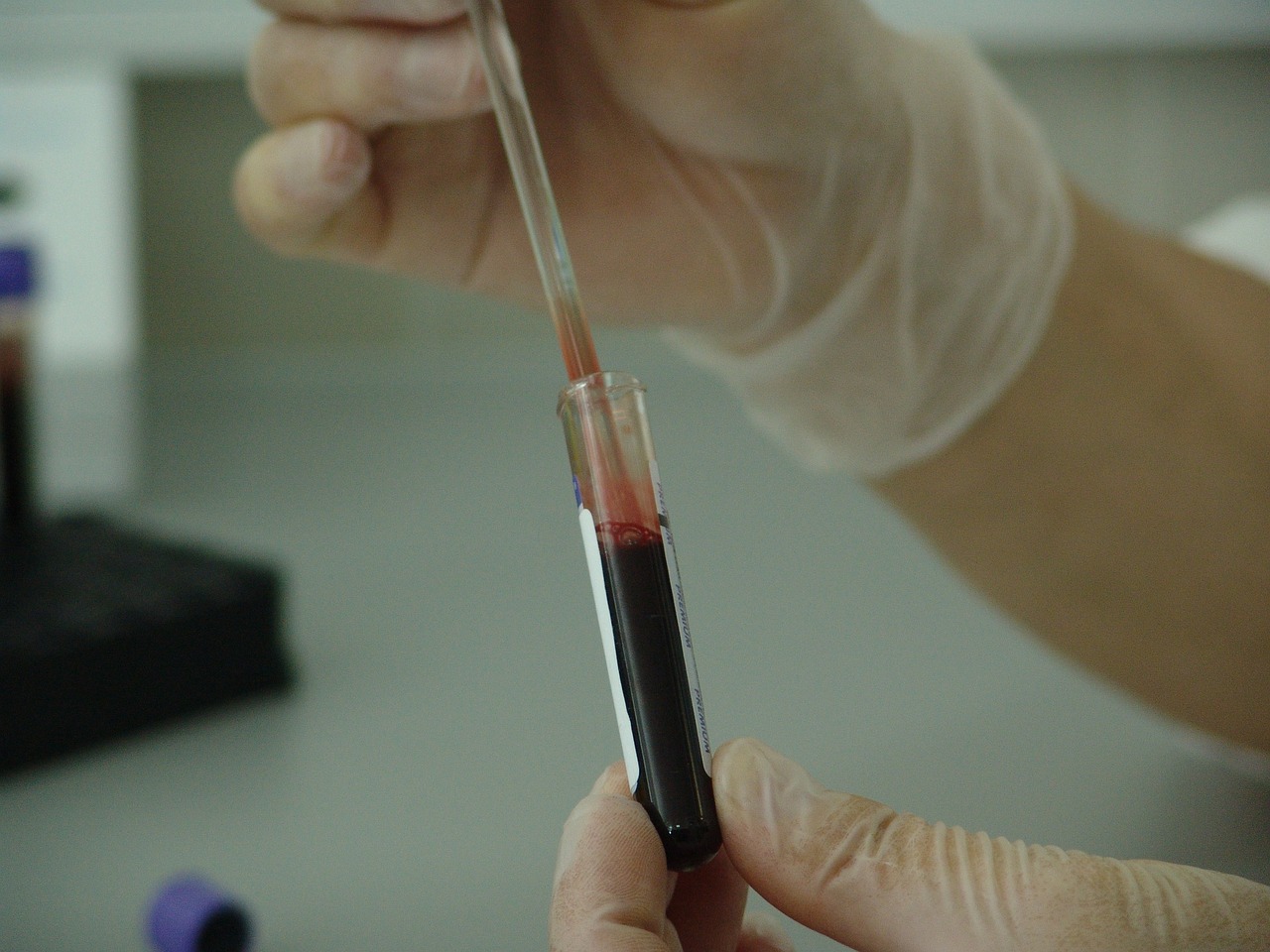
Legacy in Immunology
Emil von Behring's contributions to the field of immunology are nothing short of revolutionary. His pioneering work laid the groundwork for a multitude of advancements that have shaped modern medicine as we know it today. The concept of using serum therapy to treat infectious diseases was a radical departure from traditional methods, and it opened the door to the development of vaccines and antitoxins that have saved countless lives. Imagine a world where diseases like diphtheria could be treated effectively, where the fear of infections could be mitigated through scientific progress—this is the legacy von Behring left behind.
One of the most significant aspects of von Behring's legacy is his role in establishing the field of immunology as a vital branch of medical science. Before his groundbreaking work, the understanding of the immune system was rudimentary at best. His research demonstrated that the body could produce specific antibodies to combat pathogens, a concept that is foundational to immunology today. This understanding has led to the creation of vaccines that protect against diseases such as measles, polio, and influenza. The ripple effect of his discoveries can still be seen in the ongoing research aimed at combating emerging infectious diseases.
Moreover, von Behring's emphasis on scientific collaboration has had a lasting impact on how medical research is conducted. His partnerships with other scientists, particularly his collaboration with Robert Koch, highlighted the importance of teamwork in achieving significant medical breakthroughs. This spirit of collaboration continues to inspire modern researchers who work together across disciplines to tackle complex health challenges. The legacy of von Behring is not only evident in his discoveries but also in the collaborative culture that has become a hallmark of scientific inquiry.
In recognition of his contributions, many institutions and awards have been established in his honor, ensuring that his work remains a pivotal part of medical education and research. For instance, the Emil von Behring Prize is awarded to individuals who have made significant contributions to immunology, perpetuating his influence in the field. Furthermore, his methodologies and findings are still taught in medical schools around the world, serving as a foundation for future generations of scientists and medical professionals.
In summary, Emil von Behring's legacy in immunology is profound and enduring. His innovative approaches to treating infectious diseases have transformed public health and paved the way for future advancements in medicine. As we continue to face new health challenges, the principles he established will undoubtedly guide us in our quest for solutions.
- What was Emil von Behring's most significant discovery? Emil von Behring is best known for developing the diphtheria antitoxin, which was a groundbreaking treatment for the disease and paved the way for serum therapy in general.
- How did von Behring influence modern medicine? His work laid the foundation for immunology and the development of vaccines, significantly impacting how infectious diseases are treated and prevented today.
- What awards did Emil von Behring receive? He was awarded the first Nobel Prize in Physiology or Medicine in 1901 for his contributions to the field of immunology.
- How is von Behring's legacy honored today? Numerous institutions and awards are named after him, ensuring that his contributions to science and medicine are remembered and celebrated.
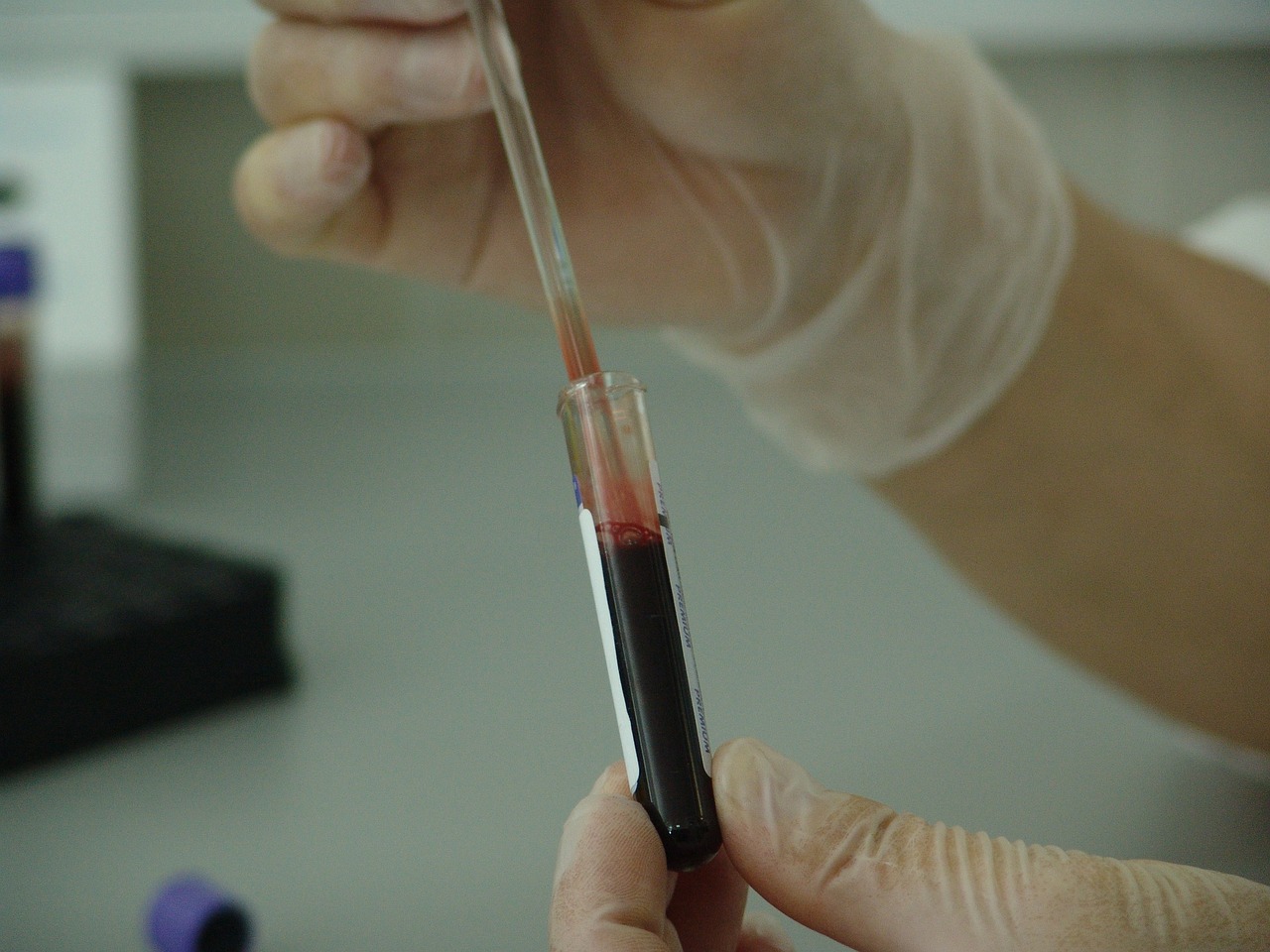
Influence on Modern Medicine
Emil von Behring's groundbreaking work in immunology has left an indelible mark on modern medicine, shaping the way we approach disease prevention and treatment. His pioneering research laid the foundation for the development of vaccines, which have become a cornerstone of public health. Imagine a world where diseases like diphtheria and tetanus wreaked havoc without any means of protection; thanks to von Behring, that scenario is now largely a thing of the past.
One of the most significant contributions of von Behring's work was the establishment of serum therapy, which involved the use of antibodies derived from the blood serum of immunized animals. This method not only provided immediate protection against infectious diseases but also paved the way for the creation of vaccines. The concept of using a weakened or inactivated form of a pathogen to stimulate an immune response is now a standard practice in immunology. Today, vaccines have saved millions of lives worldwide, preventing outbreaks and eradicating diseases that once claimed countless lives.
Furthermore, von Behring's discoveries have influenced various fields within medicine, including:
- Preventive Medicine: His work emphasized the importance of immunization as a preventive measure, leading to the establishment of vaccination programs globally.
- Public Health Initiatives: The success of serum therapy and vaccines has inspired extensive public health campaigns aimed at increasing vaccination rates and educating the public about the importance of immunization.
- Research and Development: Von Behring's methodologies laid the groundwork for further research into antibodies and their therapeutic uses, leading to the development of monoclonal antibodies and other advanced treatments.
In addition to these advancements, von Behring's legacy continues to inspire researchers today. His approach to understanding the immune system has prompted scientists to explore new avenues in immunotherapy, a burgeoning field that aims to harness the body's immune response to fight diseases such as cancer. The principles established by von Behring serve as a guiding light for contemporary researchers as they strive to develop innovative treatments that leverage the power of the immune system.
Moreover, the ethical considerations surrounding vaccination and public health policies can trace their roots back to von Behring's work. His advocacy for serum therapy and immunization underscored the necessity of scientific research in safeguarding public health, a principle that remains relevant in today's discussions about vaccine efficacy and safety. As we navigate the complexities of modern medicine, reflecting on the influence of pioneers like Emil von Behring can provide valuable insights into the importance of scientific inquiry and public health initiatives.
In conclusion, the influence of Emil von Behring on modern medicine cannot be overstated. His contributions have not only transformed our understanding of immunology but have also established a framework for ongoing research and public health strategies. As we continue to face new challenges in infectious diseases, the principles and practices that von Behring championed will undoubtedly guide future generations of medical professionals and researchers.
- What was Emil von Behring known for? Emil von Behring is best known for his pioneering work in immunology, particularly the development of serum therapy and the diphtheria antitoxin.
- How did von Behring's work impact vaccines? His research laid the groundwork for the development of vaccines, emphasizing the importance of immunization in preventing infectious diseases.
- What is serum therapy? Serum therapy involves using antibodies from the serum of immunized animals to treat infectious diseases, a practice that von Behring helped to establish.
- Why is von Behring's legacy important today? His contributions continue to influence modern medicine, particularly in the fields of immunology, vaccine development, and public health initiatives.
Frequently Asked Questions
- Who was Emil von Behring?
Emil von Behring was a pioneering German immunologist known for his groundbreaking work in the field of immunology and serum therapy. He is best known for developing the diphtheria antitoxin, which was a significant advancement in treating infectious diseases.
- What contributions did Emil von Behring make to medicine?
Von Behring's contributions to medicine include the development of serum therapy, which revolutionized the treatment of infectious diseases. His work laid the foundation for modern immunology and led to the creation of vaccines that have saved countless lives.
- What is serum therapy?
Serum therapy is a medical treatment that involves the use of antibodies derived from the blood serum of immunized animals or humans. Von Behring's work in this area led to the development of antitoxins that could neutralize toxins produced by bacteria, particularly in the case of diphtheria.
- How did Robert Koch influence Emil von Behring?
Robert Koch was a significant mentor for Emil von Behring, guiding him in his early medical career. Koch's research on infectious diseases inspired von Behring to pursue his groundbreaking studies in immunology, leading to their collaborative advancements in bacteriology.
- What was the significance of von Behring's Nobel Prize?
In 1901, Emil von Behring became the first recipient of the Nobel Prize in Physiology or Medicine. This award recognized his pioneering work in immunology and serum therapy, highlighting the importance of his contributions to the field and encouraging further research in the area.
- How has von Behring's work influenced modern medicine?
Von Behring's discoveries have had a lasting impact on modern medicine, particularly in the development of vaccines and treatments for various infectious diseases. His work paved the way for future research and advancements in immunology, shaping public health practices worldwide.
- What is the legacy of Emil von Behring in immunology?
Emil von Behring's legacy in immunology is characterized by his foundational discoveries that continue to influence contemporary research. His work not only advanced the understanding of immune responses but also set the stage for the development of life-saving vaccines and therapies.

